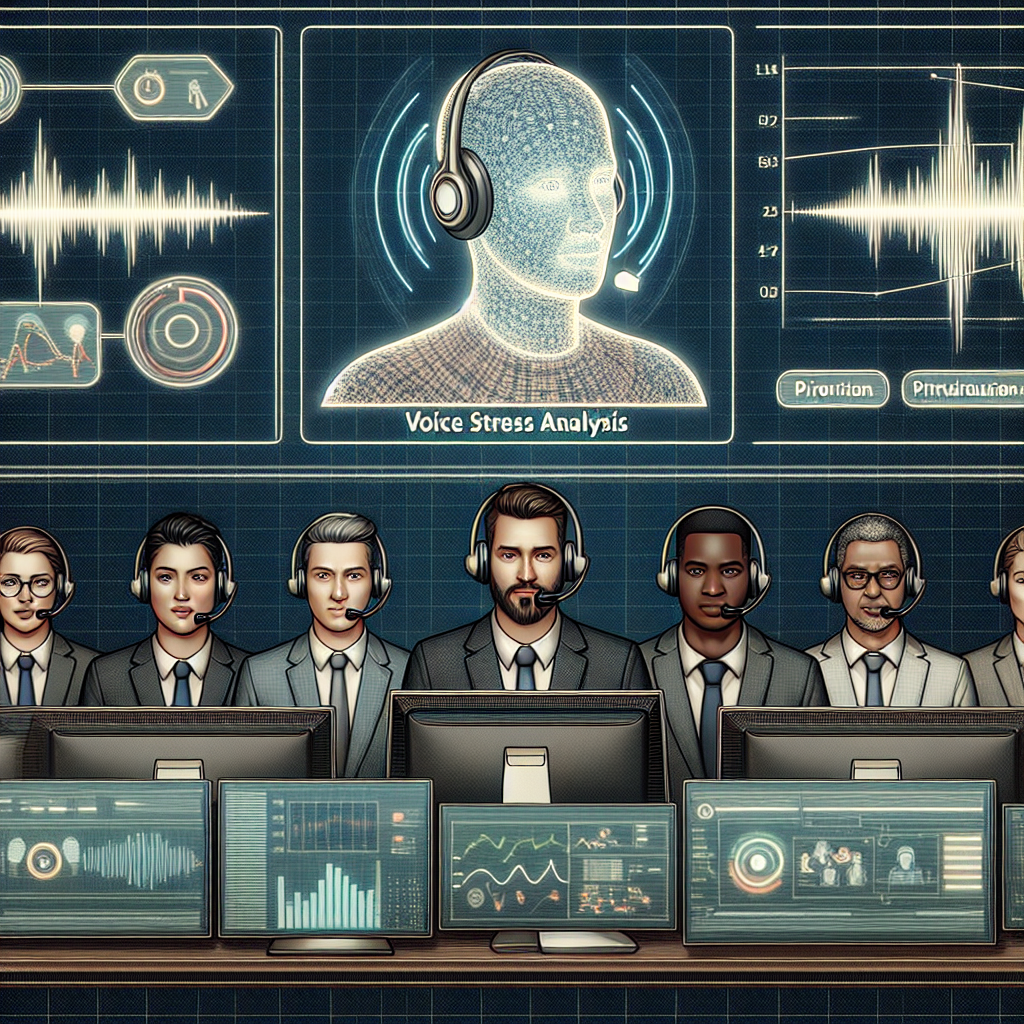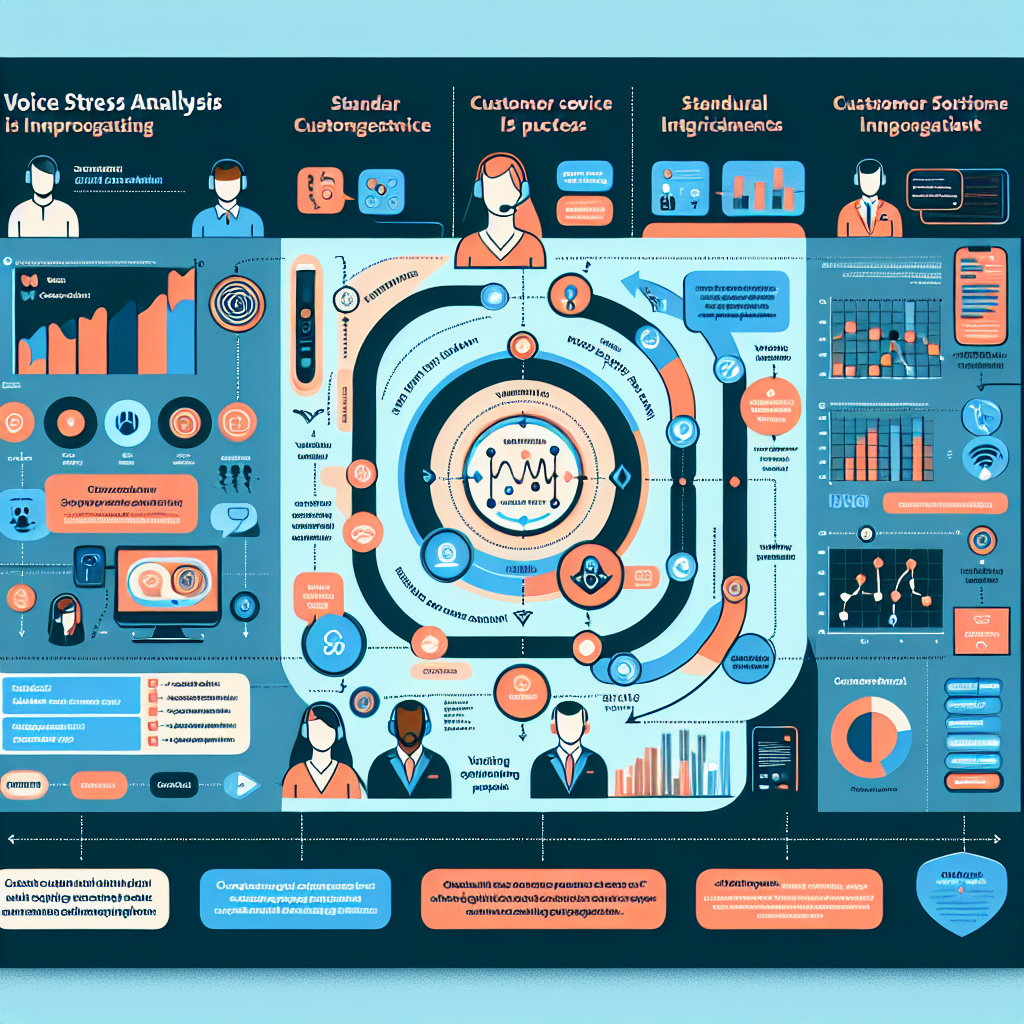
In a world where speed and accuracy in response can make all the difference, the ability to swiftly identify high-priority situations is invaluable. This is especially true in the domains of emergency services, customer service, and in many other sectors where calls are received on a routine basis. One of the ways this identification has been made possible is through the use of Voice Stress Analysis technology. This revolutionary tool is redefining how we approach large volumes of voice interactions and is particularly useful in highlighting conversations or callers under intense stress or urgency.
The cardinal duty of Voice Stress Analysis (VSA) is to study and interpret minor frequency modulations in the human voice, often triggered by psychological stress. These subtle variations can reveal hidden layers of emotion and can signal whether a speaker is experiencing high levels of anxiety, fear, or urgency. This technology, when honed to perfection, can serve as an effective lie detector, a detector of emotional distress, or a means of identifying high-priority calls.
Incorporating Artificial Intelligence (AI) into Voice Stress Analysis has been a game-changer. AI algorithms are perfectly equipped to rapidly process massive amounts of data, making them ideal for detecting patterns and anomalies in human speech. Moreover, machine learning models, a subset of AI technology, can be trained with extensive data sets of human voice fluctuations under varying emotional states. As these models learn and adapt, they can more accurately predict the urgency or stress level of a call based on speech patterns alone.
There is no denying the potent potential of this novel combination of Voice Stress Analysis and AI. While we are still in the early stages of realizing its full possibilities, it's clear that such advanced tech has far-reaching implications, from redefining call center operations, to life-saving applications in emergency services.
Voice Stress Analysis is at the forefront of cutting-edge technologies used in call prioritization and customer service departments worldwide. AI tools are employed to evaluate and score calls based on a variety of voice stress components including pitch, volume, and speed variation. These factors are meticulously analyzed by AI algorithms which can identify patterns that denote stress or urgency, making it possible to assign calls in order of priority.
The backbone of this system is the AI's capacity to measure the acoustic features of a caller's voice. Particularly, it focuses on pitch—the perceptual property that allows the ordering of sounds from low to high—and volume—the intensity or loudness of the voice. It scrutinizes the speed of speech too, allocating a stress score based on variations in these parameters. A high pitch, increased volume, or rapid speech, usually indicate a stressed or urgent caller, prompting the AI to flag these calls as high-priority.
These AI tools perform real-time analysis and can withstand high call volumes, making them an invaluable asset to customer service centers. As AI continues to evolve, its precision in voice stress identification and call prioritization is expected to increase, leading to enhanced customer service and more efficient call management.
Of course, despite the appeal of this advanced technology, it’s crucial to remember that the system is not foolproof. Factors like cultural differences, individual vocal traits or even simple throat issues can influence voice characteristics and potentially lead to misread signals. However, as the machine learning algorithms underpinning these tools are continually trained and refined over time, these potential errors are expected to decrease, and the performance of voice stress analytic tools is anticipated to continually improve.
The advent of Artificial Intelligence (AI) has revolutionized numerous sectors, including telecommunications and customer service management. These advancements have emphasized the importance of Voice Stress Analysis, a groundbreaking technique that leverages AI to quantify and analyze emotional stress in a speaker's voice. This technology has profound implications for identifying high-priority calls and enhancing customer service experiences. But, how can we integrate this advanced tool with our existing systems?

Fortunately, many AI tools are designed to easily implement into existing infrastructure. For instance, Emotion Voice Tool, an AI tool for voice stress analysis, can plug directly into a company’s current communication system, thereby enabling real-time monitoring of customer interactions. With this tool, priority calls can be identified and promptly addressed, thus, ameliorating the overall customer experience and streamlining operations.
In the context of customer service, the integration of Voice Stress Analysis AI tools has been made ethereal thanks to cloud-based solutions. The technologies such as AWS Call Center Architecture and Google Cloud-based Contact Centers provide APIs that can integrate with AI-powered Voice Stress Analysis tools to further enhance their service offerings.
Beyond compatibility, these AI tools are also designed to work in accord with a company's data privacy and security frameworks. This ensures that while enhancing their customer service efforts, organizations do not compromise on the security and privacy of their users altogether, attaching another layer of trust to their practices.
In conclusion, the coalescence of existing customer service infrastructure with AI-powered Voice Stress Analysis tools offers an efficient solution to improve customer service functioning. Their compatibility ensures easy integration, while their compliance with security norms guarantees the safety of user data, making these tools an ideal fit for the modern-age customer service platform.
As Voice Stress Analysis AI tools become increasingly sophisticated in identifying high-priority calls, ethical considerations about privacy, consent, and potential biases are inevitable. While these AI tools have promising uses in areas such as emergency services and customer support, misuse or over-reliance on these tools may lead to serious breaches of personal privacy and massive disparities in call classification.
Firstly, use of such technology directly intersects with the right to privacy. Listening to and analyzing people's calls without their explicit consent infringes upon that right. Although these tools could potentially save lives in emergency situations, it is crucial that users always be made aware when their voices are being analyzed by an AI. Implied consent may not hold in all jurisdictions, potentially creating legal issues for users and providers of this technology.
Furthermore, AI voice stress analysis tools pose a risk of introducing or perpetuating bias. The datasets used to train these AI tools can carry existing biases, thus impacting the AI's performance. For instance, a tool trained predominantly on voices from a specific demographic may perform poorly when analyzing voices from another group. This results in unequal treatment of different demographic groups, a significant ethical concern.
Yet, these issues should not overshadow the potential benefits of these AI tools. When correctly used and regulated, these tools can significantly improve responsiveness in critical services such as emergency responses or call centers. But it is vital that ethical considerations remain at the core of developing and implementing these innovative technologies.
Overall, ethical removal or mitigation of potential biases, solid consent and privacy policies, combined with open discussions about the implications of this technology, are necessary to ensure that the use of these AI tools aligns with the principles of fairness, respect and care for individual rights.
In recent years, the adoption of Voice Stress Analysis (VSA) AI tools in sectors requiring high-priority responses has been increasing, illustrating institutional faith in the power of digital transformation. These tools, using advanced algorithms that discern urgency in human phonic patterns, are mitigating risks and enhancing responses to urgent situations.
One such instance is emergency dispatch management. An AI-based VSA tool employed by the 911 Emergency Dispatch Center in the United States demonstrated a significant increase in the classification of life-threatening calls within the first few seconds of the call. The result was faster dispatch times for first responders.

Major call centers have also seen positive results. One IBM Watson Assistant powered call center noted a 20% improvement in customer satisfaction following the integration of AI-powered stress analysis tools. With the VSA AI detecting stress in customers' voices, operators are alerted to potentially escalating calls, enabling a swift and targeted response.
Finally, VSA AI tools have proved instrumental within the finance sector. Hangzhou City Commercial Bank in China effectively reduced fraud cases by using these AI tools. They detected stress and urgency in callers reporting lost or stolen credit cards, identifying genuine reports over false alarms.
These case studies highlight the efficacy of Voice Stress Analysis (VSA) AI tools and their transformative implications across different sectors. As AI becomes increasingly intuitive, it's poised to play an even more integrated role in prioritizing responses to high-stress scenarios.
As artificial intelligence continues to evolve at a rapid pace, voice stress analysis is one area poised to leap forward with unprecedented progress. No longer confined to rudimentary stress detection, future AI tools will likely leverage advanced machine learning algorithms to decipher more nuanced aspects of voice stress. Potential new features could include a finer analysis of vocal tremors, silent pauses, and other subtle vocal changes that humans might miss. The accuracy and efficiency of voice stress analysis is only going to increase as AI technology continues to mature.
Moreover, these advancements in AI technology will allow for a wider application spread. Police departments, for example, can implement improved voice stress analysis tools during suspect interrogations, offering a more objective basis for assessing someone's honesty. High-stake call centers can use these tools to prioritize calls based on perceived stress levels, greatly improving their response efficiency. Even industries like human resources could benefit, using these tools for pre-screening in job interviews to swiftly identify and manage candidates showing signs of high-stress levels.
In the healthcare sector, AI-backed voice stress analysis can help in tracking patient health. By analyzing the stress levels and emotional tones in a patient's voice, AI tools can predict potential health risks or progression of diseases like Parkinson's and clinical depression. This way, doctors would be able to provide informed treatment ahead of time.
Another transformative trend in the sector is the rise of voice biometrics. In the future, not only will the AI tools detect stress, but they will also identify individual speakers by comparing voice characteristics against a database. This functionality can heighten security measures across an array of industries, from banking to homeland security, further amplifying the potential of these AI advances.
The future trends in voice analysis AI indeed open up a world of possibilities and growth opportunities across various industries, providing a more holistic approach to understanding human emotions and stress – all through the power of voice.
Start your free trial for My AI Front Desk today, it takes minutes to setup!








